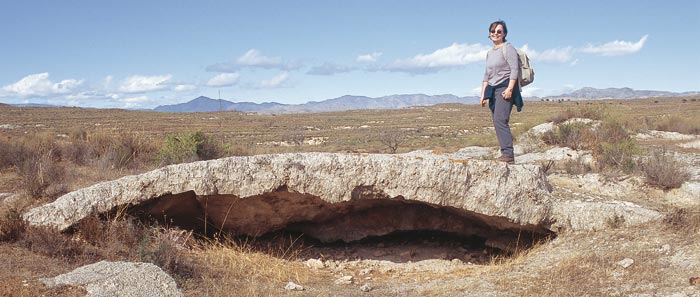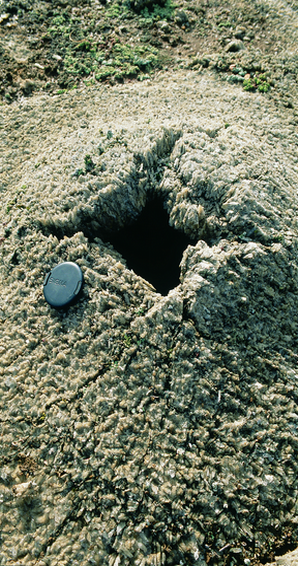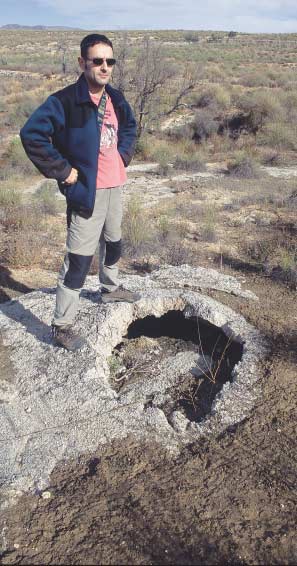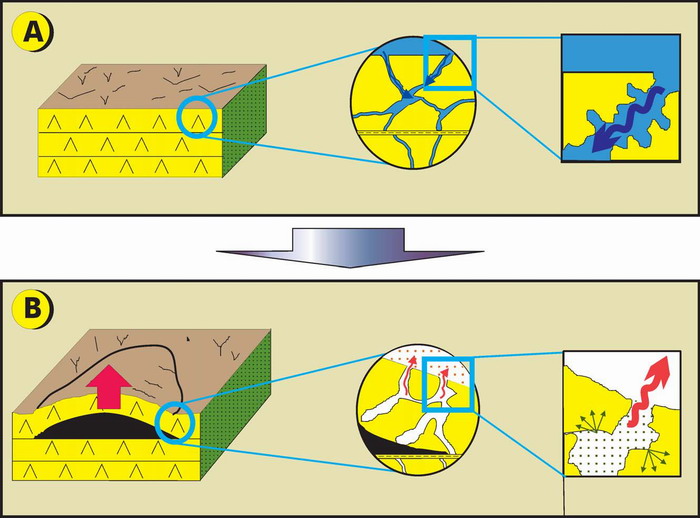
One of the larsgest tumulus in the Sorbas Gypsum outcrop
The tumuli are one of the most unusual and least-commonly described surface features, which are frequently associated with a gypsum karstic landscape. They are caused by the upward-doming of the uppermost layer of the gypsum into a hemispherical form and they can reach several metres in diameter. The Sorbas Gypsum Karst was the first place where a tumulus was described. Their formation is especially favoured under extremely arid conditions and so there is no doubt that Sorbas is one of the best places in the world to see how tumuli are formed.
The genesis of tumuli is linked to processes of dissolution and precipitation that are active today. The porosity of the gypsiferous rock, which is quite high in macrocrystalline gypsum, enables rainwater and dew to flow in between the large gypsum crystals. This water (which has a very low mineral content) dissolves the gypsum along the planes and in the voids between the crystals. Afterwards, the high evaporation rate causes saturation and recrystallization of the gypsum in the inter- and intra-crystalline spaces. This deposition of solid material causes pressure, which in turns provokes an increase in volume that is translated into the gentle upward-doming of the gypsum layer closest to the ground surface (Figure 5).

One of the larsgest tumulus in the Sorbas Gypsum outcrop


Usually the tumuli show a broken dome

Figure 5